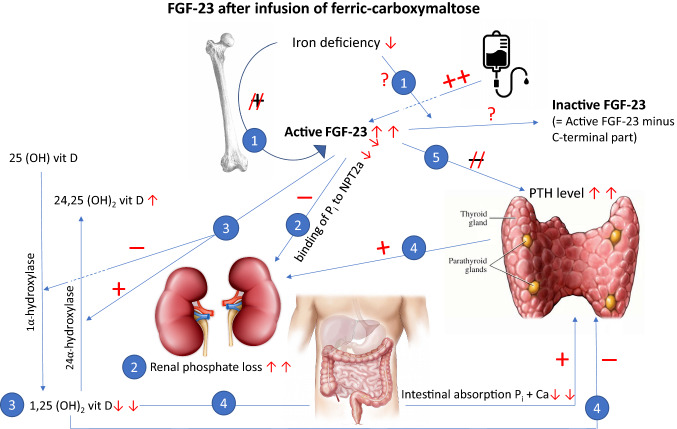Fig. 2.
The effects of FGF-23 after infusion of ferric carboxymaltose. Although the iron deficiency-driven stimulus for increased FGF-23 production and the simultaneous inactivation is diminished after iron repletion, the active FGF-23 level is remarkably increased following ferric carboxymaltose infusion. The exact mechanism behind this increase is currently unknown (1). This strongly results in diminished binding to NPT2A in the proximal tubule in the kidney and induces renal phosphate losses (2). In addition, vitamin D metabolism is disturbed by blocking the activation of 25 (OH) vitamin D and stimulating the inactivation of active 1.25 (OH)2 vitamin D (3). The markedly reduced active vitamin D concentrations result in lower intestinal calcium and phosphate absorption. By lower calcium and phosphate concentrations, the secretion of PTH is stimulated. In addition, active vitamin D no longer blocks the secretion of PTH. The substantial increase in PTH further stimulates renal phosphate losses (4). The ongoing stimulus of FGF-23 downregulates the blockade of FGF-23 on PTH secretion, which results in a further increase in PTH concentrations and renal phosphate losses (5). FGF-23 fibroblast growth factor 23, Pi inorganic phosphate, NPT2A sodium-dependent phosphate cotransporter 2A, PTH parathyroid hormone, Vit D vitamin D

